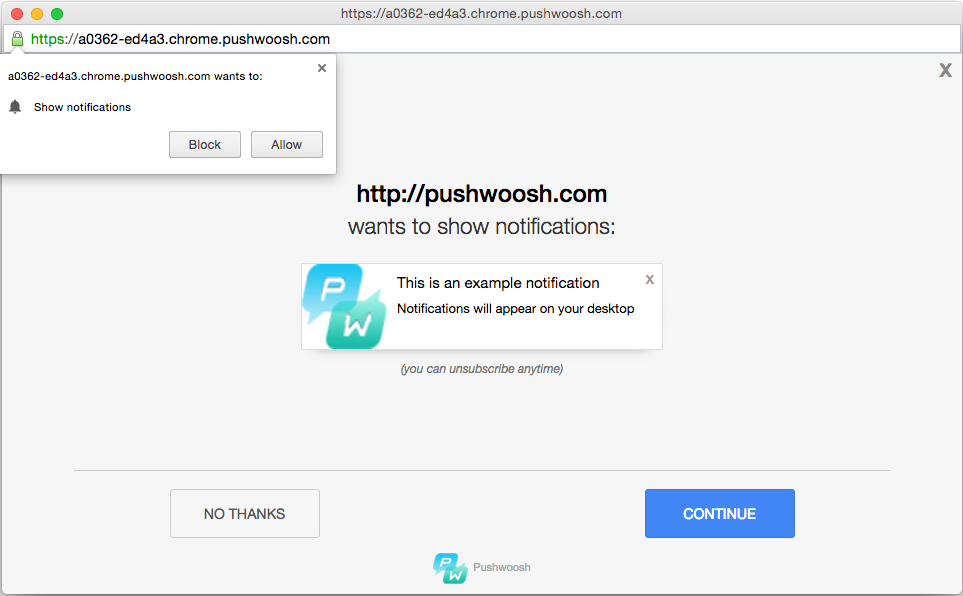Usually Chrome Push Notifications require your website to use SSL certificate. In other words, your website has to be on HTTPS to receive push notifications. SSL (Secure Socket Layer) is the standard security technology, which is used to establish an encrypted link between a web server and a browser. It maintains privacy of the transferred information and protects user against poor validation of HTTPS certificates and man-in-the-middle attacks between your server and the push provider.
So, not all websites are using SSL yet, but you may need to send pushes to them. Pushwoosh has made it possible to send push notifications to non-SSL websites. So users are able to be subscribed even if their site is not on HTTPS. For a thorough description of how you can integrate Pushwoosh Notification Service to HTTP website visit our guide.
It’s worth mentioning that major browsers like Chrome and FireFox are planning to gradually deprecate non-SSL websites in near future, as we have been informed by our partners. Though, as long as HTTP resources are widely used, Pushwoosh will help you to broaden your audience by reaching out to a wider number of websites.
To sum up: secure or not, we’ll deliver your message, if you need it. Just remember: safety first. Always!


